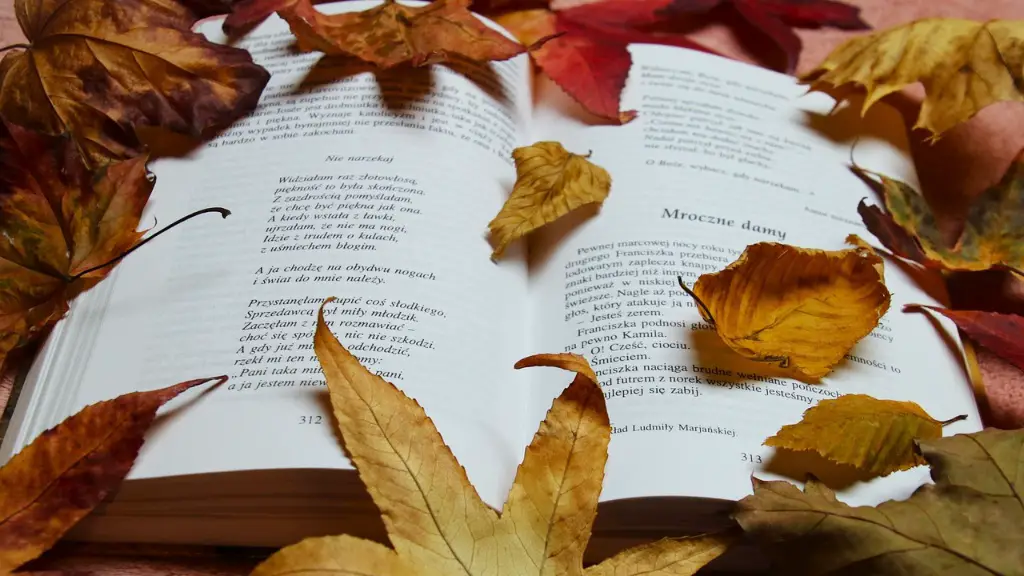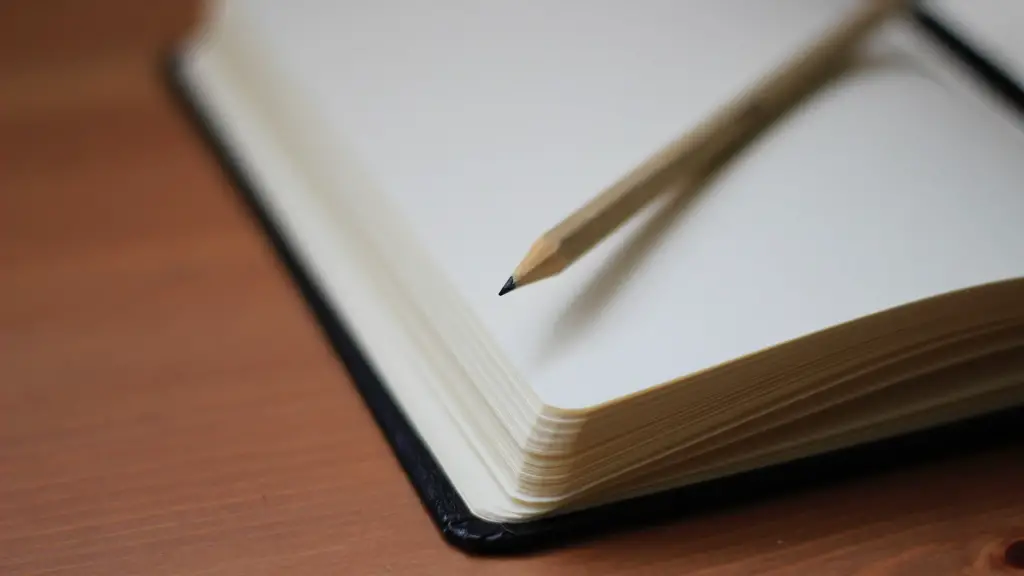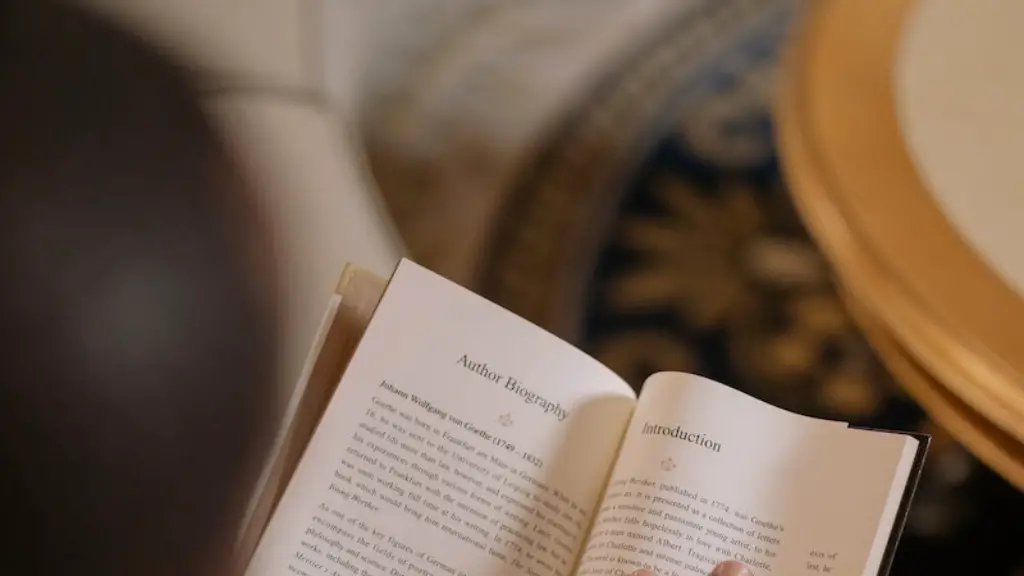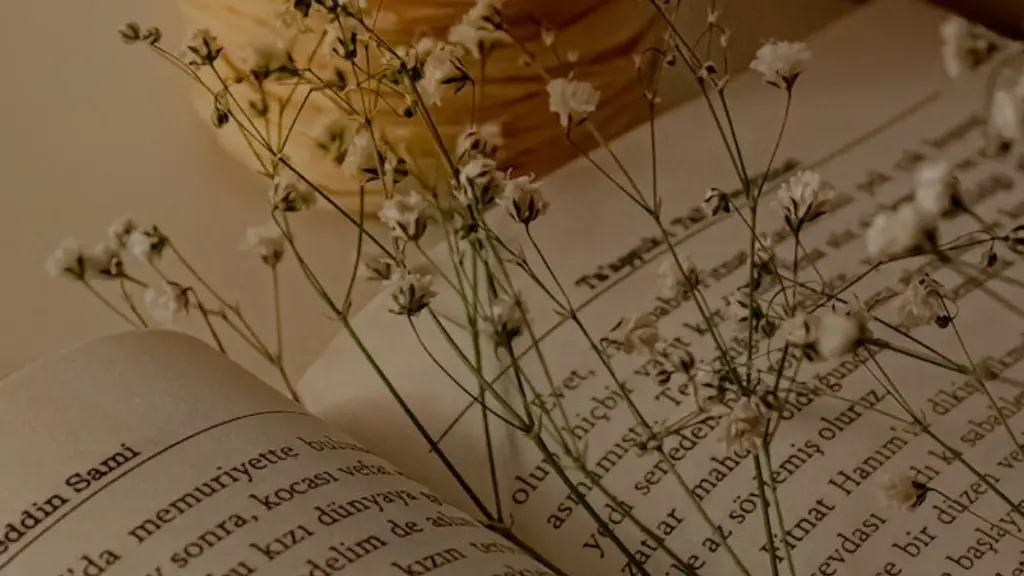Poetry is a powerful form of expression that allows an individual to convey their thoughts, feelings and emotions. This art form has been around for centuries and spans multiple cultures. Whether writing free-form poetry or verse, the basic elements of poetry remain the same. To understand the basics of poetry, it is important to take a look at the different elements that make it up.
One of the most essential elements of poetry is the use of language. Poets are able to create beautiful images, feelings and emotions with the words they use. By combining words and creative phrasing, a poet can convey their thoughts in a way that resonates with readers. Poetry often contains imagery, or figurative language, designed to evoke a vivid picture in the mind of the reader.
Another important element of poetry is meter. This literary device can be used to create rhythmic patterns and help to give a poem a certain feel. Meter may be used to create a certain mood or convey an emotion. Two of the most common types of meter are iambic pentameter and dactylic hexameter.
The next element of poetry is rhyme. Rhyme is used to create a pleasing and memorable effect on the reader. Using a specific pattern of rhymes throughout a poem can help to enhance its overall impact. It is also important to use different words and phrases to keep the rhyme pattern fresh and interesting.
The use of stanzas is a key element of poetry as well. Stanzas are simply groupings of lines that are normally separated from other stanzas by a line break. Depending on the structure of the poem, stanzas can have different numbers of lines. Stanzas can also have different patterns of rhyme and meter.
The final element of poetry is its structure. The structure of a poem is the way it is organized and presented. It can range from something as simple as a one-line poem to something as complex as a longer narrative poem. The structure of a poem is important because it gives the poem a sense of unity and helps to guide the reader through it.
Tone and Mood in Poetry
Tone and mood are two elements of poetry that are closely related. Tone refers to the attitude or feeling of the poem. It can range from light-hearted and humorous to dark and serious. Mood is the atmosphere or emotion that the poem conveys. Depending on the poem’s tone, the mood may be peaceful and serene or unsettling and intense.
Tone and mood can be conveyed through the use of words and figures of speech. For example, words with a negative connotation, such as “festering” and “grim”, can create a dark and sinister mood. By contrast, words with a positive connotation, such as “peaceful”, “delightful”, and “grateful” can create a bright and cheerful mood.
The language, meter and rhyme of a poem can also be used to create atmosphere and emotion. Metaphors and similes can be employed to create vivid imagery that can evoke a certain mood in the reader. The rhythm of a poem can also be used to create a certain atmosphere, with a slower pace conveying a contemplative feeling, while a faster pace conveying action or excitement.
Tone and mood are important elements of poetry. They can be used to convey an emotion or feeling and create a powerful and memorable experience for the reader. By using a variety of language, meter, and rhyme, and making use of figures of speech, poets can create a unique and captivating tone and mood in their work.
Poetry and Sound
Sound is an important element of poetry and is often used to draw attention to certain words and ideas. Poets often employ techniques such as alliteration, assonance and consonance to create a musical effect. Alliteration is the repetition of the same sound at the beginning of two or more words. For example, the line “Able was I ere I saw Elba” from Abraham Lincoln’s Gettysburg Address is an example of alliteration.
Assonance is the repetition of the same vowel sound, while consonance is the repetition of consonant sounds. Poets often make use of these techniques to create interesting and memorable sounds and to emphasize certain words or ideas. The use of sound in poetry can add an extra layer of meaning to the work and can draw the reader into the poem.
The sound of a poem can also be affected by its meter and rhyme. The use of iambic pentameter or dactylic hexameter, for example, can create a specific feeling or atmosphere. Rhyme can also be used to create a certain sound or effect, with certain rhyme schemes having a more uplifting or darker sound.
Sound is an important element of poetry and can be used to create a unique and powerful experience for the reader. By employing techniques such as alliteration, assonance and consonance, the poet can add an extra layer of meaning to the work and emphasize certain words or ideas.
Figures of Speech in Poetry
Figures of speech are words or phrases used to make a point or draw attention to certain words or ideas. They can range from something as simple as an analogy or metaphor to more complex figures such as allegory. Figures of speech can create vivid images in the reader’s mind and are an important component of poetry.
Metaphor is one of the most commonly used figures of speech in poetry. A metaphor is a comparison between two seemingly different things in order to draw attention to a certain idea. For example, the phrase “She is the sun” is a metaphor used to convey the idea that she brings light and warmth to the speaker’s life.
Simile is another common figurative device. It is similar to a metaphor but uses the words “like” or “as” to draw the comparison. For example, the phrase “She is like the sun” is a simile used to convey the same idea as the metaphor.
Alliteration is another figure of speech often used in poetry. This is the repetition of the same sound at the beginning of two or more words. For example, the phrase “bluebells blossom brightly” contains alliteration with the repetition of the “b” sound.
Figures of speech can be used to create vivid images and convey powerful ideas in poetry. They can add an extra layer of meaning to a poem and help to emphasize certain words or ideas. By making use of figures of speech, poets can create memorable and captivating works of art.
Perspective and Meaning in Poetry
Perspective and meaning are two important elements of poetry. Perspective refers to the point of view or outlook of the poet, while meaning relates to the deeper underlying message of the poem. By combining these two elements, the poet can create a powerful and moving work.
The perspective taken by the poet can greatly influence the meaning of the poem. For example, if the poet is writing from a personal point of view, the poem may explore issues of love, loss, regret, or hope. On the other hand, if the poet is writing from an historical perspective, they may explore events, ideologies and topics that are of a more general nature.
The poet’s choice of language, voice and imagery can also influence the meaning of the poem. By choosing certain words and figures of speech, the poet is able to draw attention to certain ideas and convey a certain feeling or emotion. The poet’s choice of language and imagery can also affect the tone and mood of the poem, which can be used to create a powerful and memorable effect.
The arrangement of the poem is important as well. The structure of a poem, with its combination of stanzas, meter and rhyme, helps to create a sense of unity and guide the reader through the work. By arranging the poem in a certain way, the poet can influence the way the reader interprets it.
Perspective and meaning are two essential elements of poetry. By combining these two elements, the poet is able to create powerful and moving works of art that can resonate with readers. Through their choice of language, imagery, and structure, poets can convey powerful messages and evoke strong emotions in their readers.
Poetry in the 21st Century
Poetry remains a powerful form of expression and is just as relevant today as it was in centuries past. While some traditional forms of poetry such as sonnets or odes are still practiced, many contemporary poets are exploring new ways of expressing themselves and pushing the boundaries of the art form.
In the 21st century, technology has allowed poets to reach larger audiences with their work. Social media, websites and blogs are some of the tools available to poets who want to share their work. Poets are also making use of other technologies such as video and audio to create dynamic and engaging pieces of art.
The internet is also home to a variety of online poetry communities. These communities are great places for poets to share their work, receive feedback and connect with other like-minded people. Many of these communities are widespread, making it easy for poets from all over the world to come together and share their work.
In the 21st century, poetry remains alive and evolving. Technology is helping poets to extend their reach further than ever before, allowing them to create and share their work with a worldwide audience. Online communities are also providing poets with an opportunity to connect and collaborate. With these tools and technologies available to them, poets are able to create dynamic and captivating works of art.
The Power of Poetry
At its core, poetry is a powerful tool of expression that can be used to convey powerful emotions and experiences. Poetry gives an individual the power to communicate thoughts and feelings that may not be easy to express orally. By taking a moment to pause and reflect, the poet can create an evocative work of art that can have a profound effect on others.
As anyone who has experienced poetry can attest, a well-crafted poem can have a powerful and lasting impact. It can evoke feelings of joy, sorrow, love and passion, and it can be a source of inspiration and hope. Through their chosen words and stories, poets are able to speak to their readers in a way that is both direct and profound.
The power of poetry also lies in its ability to bring people together. Poetry transcends boundaries of language and culture, allowing people from all walks of life to experience the same emotion and share the same feelings. In sharing our work with each other, we can learn from one another and gain a greater understanding of the world around us.
Poetry is a powerful form of expression that has been around for centuries. By combining language, imagery, meter and rhyme, poets are able to create evocative works of art that can have a profound impact on their readers. Through their poetry, poets are able to share powerful messages and emotions with their readers, and in doing so, create something truly unique and remarkable.





